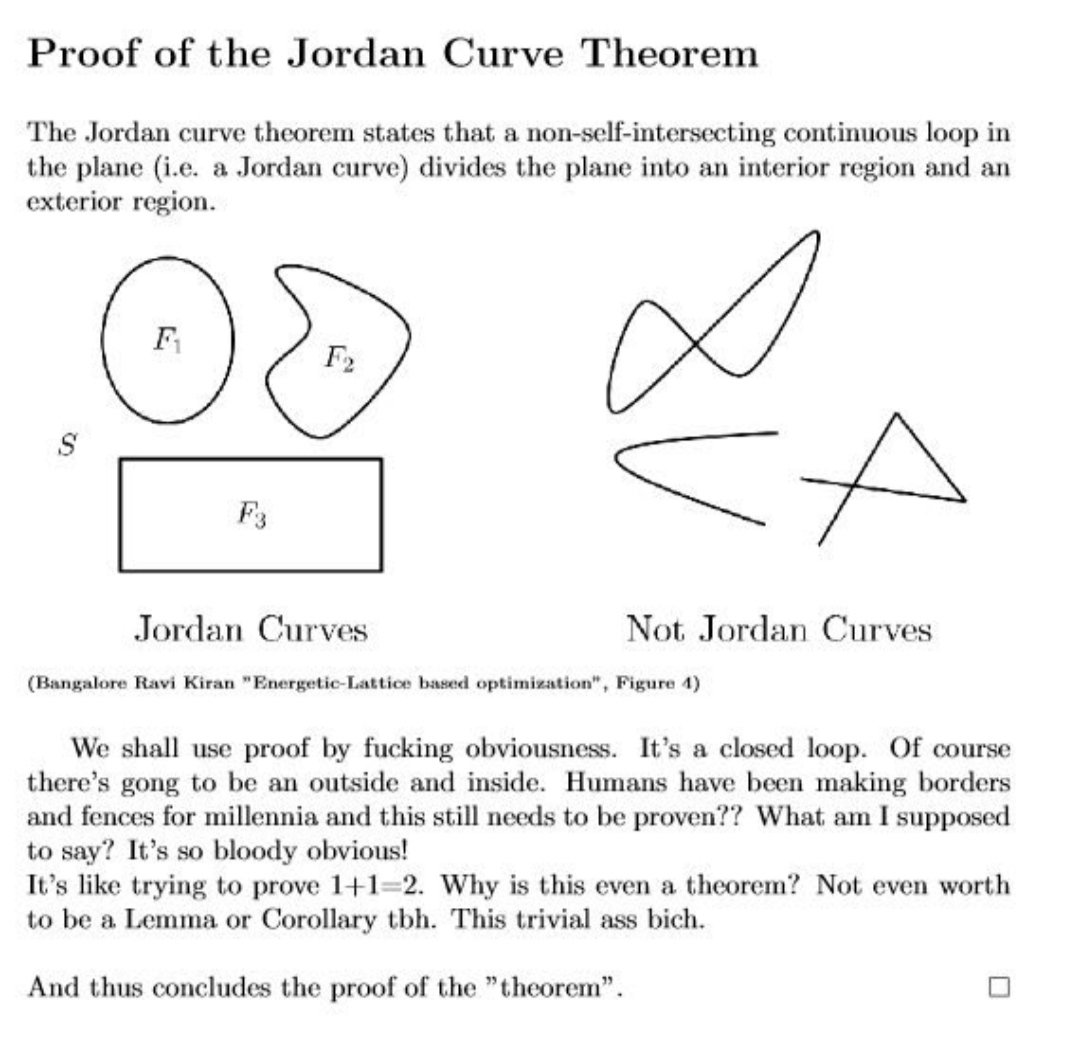this post was submitted on 20 Oct 2024
349 points (96.5% liked)
Math Memes
1477 readers
69 users here now
Memes related to mathematics.
Rules:
1: Memes must be related to mathematics in some way.
2: No bigotry of any kind.
founded 1 year ago
MODERATORS
you are viewing a single comment's thread
view the rest of the comments
view the rest of the comments

You only needed to choose 2 points and prove that they can't be connected by a continuous line. Half of your obviousness rant
prove it then.
It's fucking obvious!
Seriously, I once had to prove that mulplying a value by a number between 0 and 1 decreased it's original value, i.e. effectively defining the unary, which should be an axiom.
Mathematicians like to have as little axioms as possible because any axiom is essentially an assumption that can be wrong.
Also proving elementary results like your example with as little tools as possible is a great exercise to learn mathematical deduction and to understand the relation between certain elementary mathematical properties.
So you need to proof x•c < x for 0<=c<1?
Isn't that just:
xc < x | ÷x
c < x/x (for x=/=0)
c < 1 q.e.d.
What am I missing?
My math teacher would be angry because you started from the conclusion and derived the premise, rather than the other way around. Note also that you assumed that division is defined. That may not have been the case in the original problem.
isnt that how methods like proof by contrapositive work ??
Proof by contrapositive would be c<0 ∨ c≥1 ⇒ … ⇒ xc≥x. That is not just starting from the conclusion and deriving the premise.
i really dont care
Then don’t get involved in this discussion.
Your math teacher is weird. But you can just turn it around:
c < 1
c < x/x | •x
xc < x q.e.d.
This also shows, that c≥0 is not actually a requirement, but x>0 is
I guess if your math teacher is completely insufferable, you need to add the definitions of the arithmetic operations but at that point you should also need to introduce Latin letters and Arabic numerals.
It can’t be an axiom if it can be defined by other axioms. An axiom can not be formally proven
One point on the line
Take 2 points on normal on the opposite sides
Try to connect it
Wow you can't
This isn't a rigorous mathematic proof that would prove that it holds true in every case. You aren't wrong, but this is a colloquial definition of proof, not a mathematical proof.
Sorry, I've spent too much of my earthly time on reading and writing formal proofs. I'm not gonna write it now, but I will insist that it's easy
so... maybe its not worth proving then.
Oh trust me, I believe you. Especially using modern set theory and not the Principia Mathematica.
Only works for a smooth curve with a neighbourhood around it. I think you need the transverse regular theorem or something.
Grated